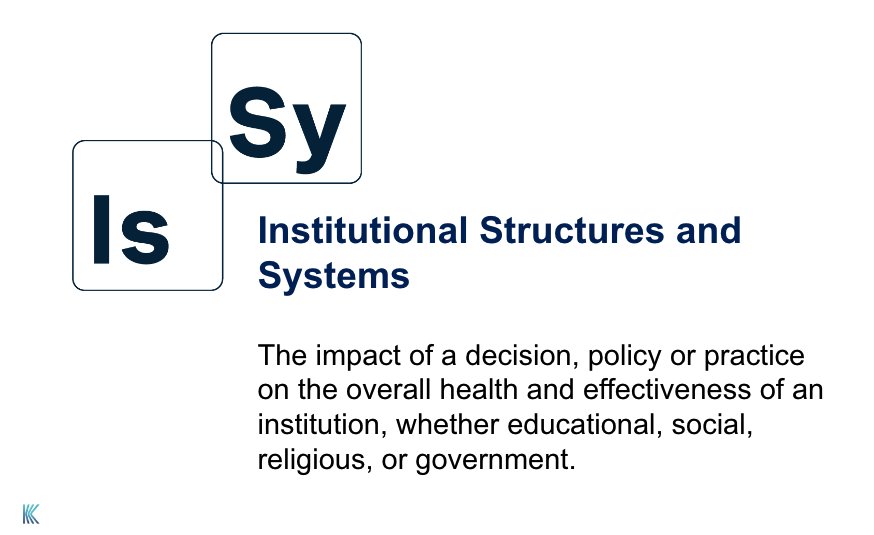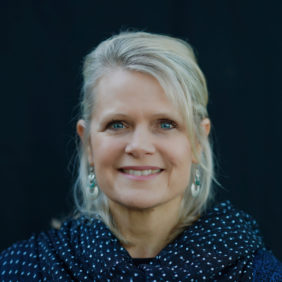Anytime we implement what we think is a solution to a problem, we are likely creating other problems. So, how do we end up with better problems? As we continue exploring The Four Containers, this question arose while thinking about The Third Container: Institutional Structures and Systems. Why? Because in my experience, there is no such thing as a perfect solution.
This is evident within institutional structures and systems where leaders often act to create solutions without considering all possible decisions from an objective and thoughtful perspective. It’s also tempting for leaders to take shortcuts and focus on addressing immediate needs instead of doing the longer, harder work of true reform, like in the case of Roe v. Wade.
The U.S. Supreme Court’s decision to overturn Roe v. Wade was ostensibly made because its original 1973 decision was an overstep. It was an attempt to fix a problem the Supreme Court shouldn’t have been responsible for. Had the legislative branch of government taken steps to pass laws and codify bodily autonomy, the court wouldn’t have played such an impactful role.
There is value in taking time to do things the right way to create sustainable, long term solutions.
So, what does it mean to do things the ‘right way?’
Start by considering and trusting the experiences and perspectives of the people around you. When seeking solutions, ask questions and pay attention to the responses. Your perspective is one of many and understanding how a decision will impact people is critical. Leaders need to be able to thoughtfully communicate why and how their decisions are made. This includes evaluating what helps institutional structures work well and what makes them cumbersome or less effective.
While bureaucracy slows things down, the idea that we don’t need institutional structures, systems and their accompanying regulations is naive.
Discern whether you’re in the best position to make a decision or if others should be involved. Taking time to do things the right way, even when it costs us in the short term, may outweigh the cumulative risks inherent in patchwork solutions.
This is why it’s also important to consider your beliefs about the role of institutions and the social contract between individuals and institutions. Particularly the duty of care, which is the legal requirement that institutions do not harm people in the course of fulfilling their missions.
The more influence you have, the more people will expect your actions and decisions to reflect a duty of care.
Here are some Third Container questions to help you become a more mindful decision maker:
- What problem are I/we trying to solve?
- What do I/we understand about this problem so far?
- Whom can I reach out to for additional perspectives that may be very different than mine?
- How are people currently being impacted?
- What are the possible solutions?
- How will each possible solution impact people?
- Which solution will result in the most positive long term gains?
- What resources are required to accomplish the solution?
- What institutional responsibilities are avoided or fulfilled through the proposed solution?
Finally, avoid absolutism. Acknowledge that both people and organizations can be inconsistent when it comes to perspective and decision making related to institutional structures and systems. In the pursuit of better problems to solve for, you may come to appreciate institutional structures and systems more, not less.
New to this series of articles about The Four Containers? Check out Introducing The Four Containers, The First Container: Bodily Autonomy and Personal Agency, The Second Container: Business, Legal, and Financial Exposure to Risk and Upside and The Fourth Container: People, Equity and Social Justice.


 Heather Leavitt-Martinez (she/her/hers) – Senior Product Manager
Heather Leavitt-Martinez (she/her/hers) – Senior Product Manager Wendy Ryan (she/her/hers) – CEO
Wendy Ryan (she/her/hers) – CEO Shawn Bunger (she/her/hers) – Senior Consultant
Shawn Bunger (she/her/hers) – Senior Consultant Crystal Whiteaker (she/her/hers) – Senior Consultant
Crystal Whiteaker (she/her/hers) – Senior Consultant Gail Finger (she/her/hers) – Senior Consultant
Gail Finger (she/her/hers) – Senior Consultant Monica Silkwood (she/her/hers) – Director of Operations and Experience
Monica Silkwood (she/her/hers) – Director of Operations and Experience Johanna Lyman (she/her or they/them) Senior Consultant
Johanna Lyman (she/her or they/them) Senior Consultant Sherri Horan (she/her/hers) – Senior Consultant
Sherri Horan (she/her/hers) – Senior Consultant